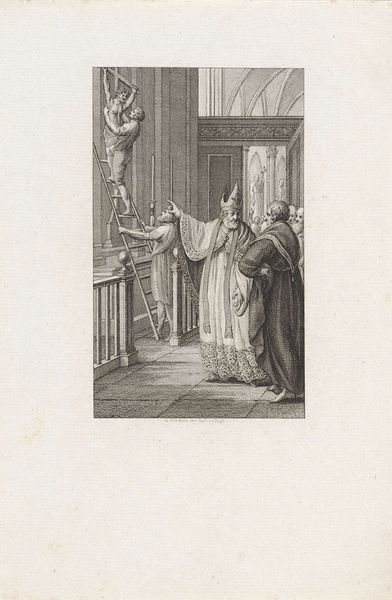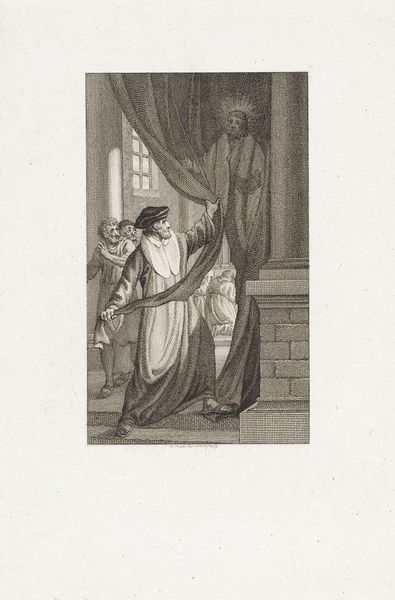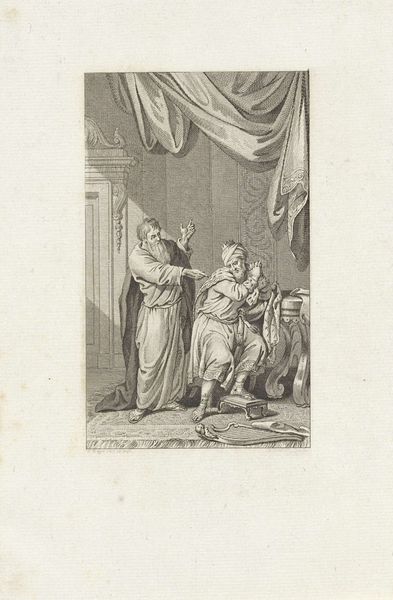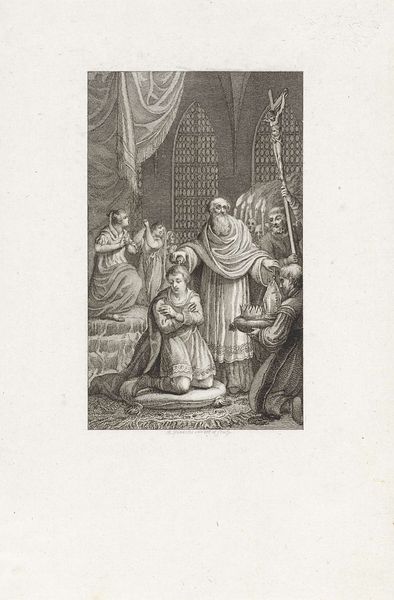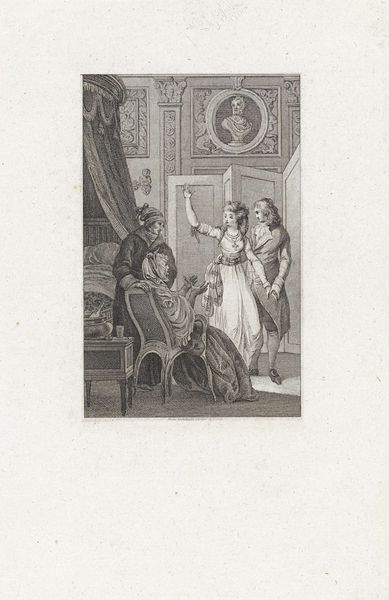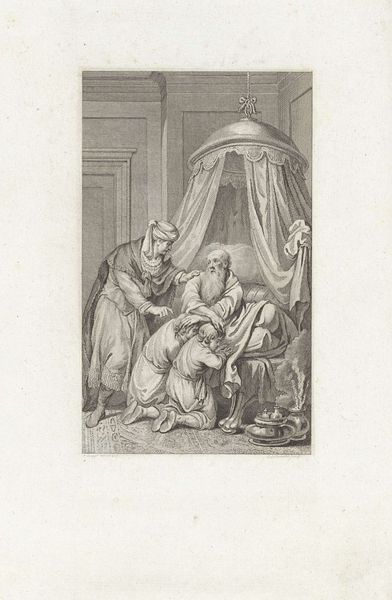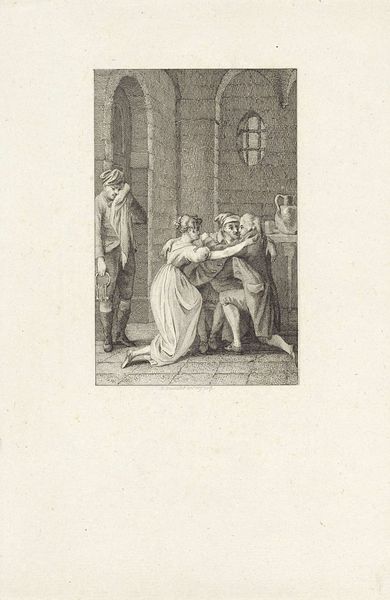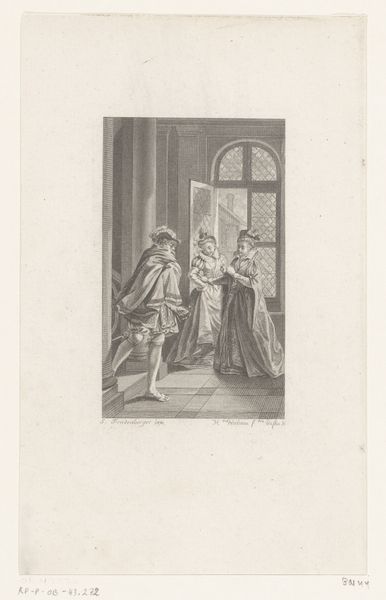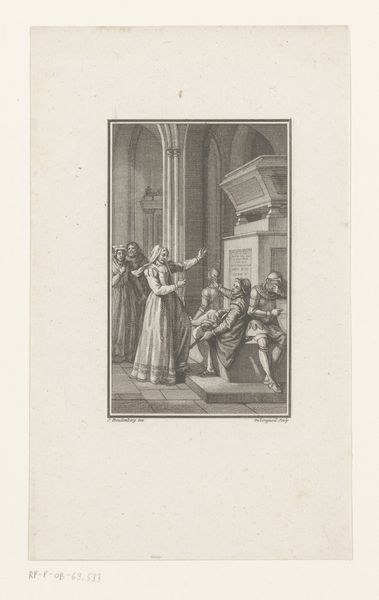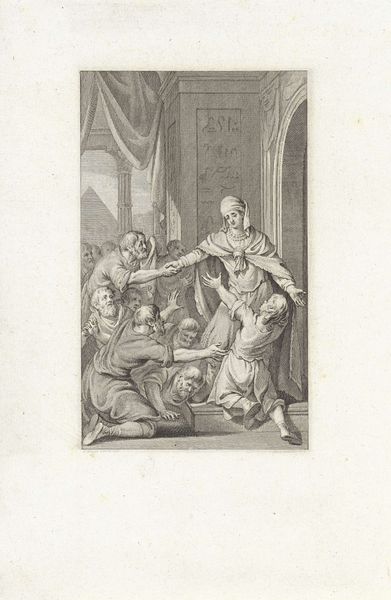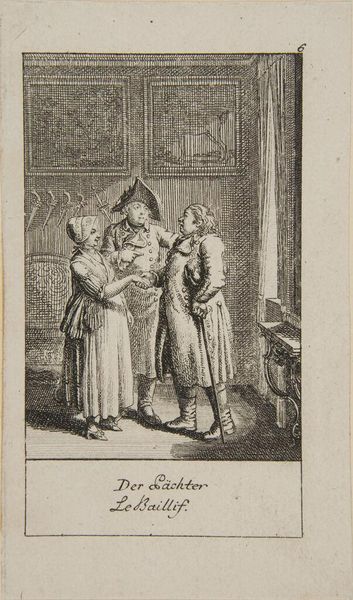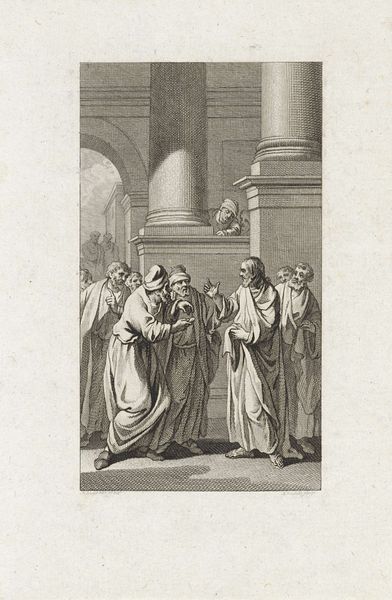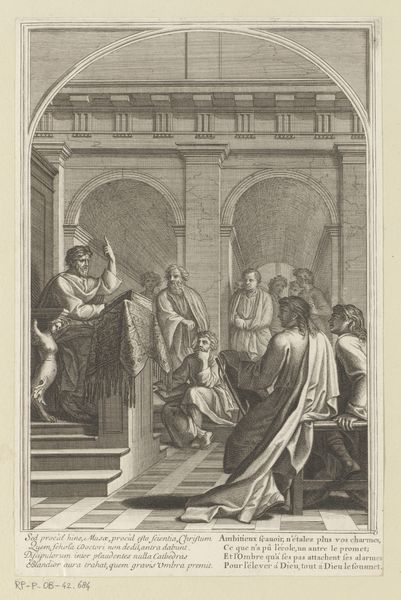
print, engraving
#
neoclacissism
#
narrative-art
# print
#
old engraving style
#
figuration
#
line
#
genre-painting
#
history-painting
#
engraving
Dimensions: height 246 mm, width 161 mm
Copyright: Rijks Museum: Open Domain
Curator: Looking at Reinier Vinkeles's 1806 engraving, titled "Paar knielt voor de bisschop van Emmeram" or "Couple kneeling before Bishop Emmeram", I'm struck by its very clean lines and the narrative being portrayed. It feels very staged, in a way. What stands out to you? Editor: I agree. It does have that almost theatrical quality that was in vogue at the time. What really grabs my attention, however, is how it was produced as an engraving— the lines look meticulously created by an artisan with his burin to achieve its tonal effects. As a student, what do you see when looking at art that may represent our class system or access to art production through specific material accessibility? Curator: Good eye. That process and the act of the printing is integral to understanding its cultural function! It points to labor and skilled craft production, right? Vinkeles wasn't just an artist, he was a craftsman engaged in a specific industry. Where were these prints likely circulated, and among what social classes? How does the accessibility of prints challenge traditional notions of art ownership and consumption at the time? It wasn’t intended to be ‘high art’ in the conventional sense, despite the Neoclassical subject matter; it was a commodity. What sort of questions does that invite for you? Editor: That makes me think about who this was made for. Not the elite, but a middle class with burgeoning interests and the money to collect. I suppose then, in light of labor and market context, the artist here isn’t some isolated genius but an actor embedded in complex social relationships that would shape this narrative to fit within the scope of intelligibility of a popular and increasingly bourgeois audience? Curator: Precisely. And thinking about this print as a commodity, does that shift your perception of its artistic value? Does it diminish it, or does it reveal new layers of meaning connected to production and circulation? Editor: It definitely adds new layers! Viewing it from a Materialist perspective gives us insight not only to art as we perceive it in the highbrow- sense, but in the role art as it is consumed and received. Curator: Agreed, I think that enriches our understanding beyond mere aesthetic appreciation. The focus on materiality encourages an interrogation of art's societal impact. Thanks!
Comments
No comments
Be the first to comment and join the conversation on the ultimate creative platform.
